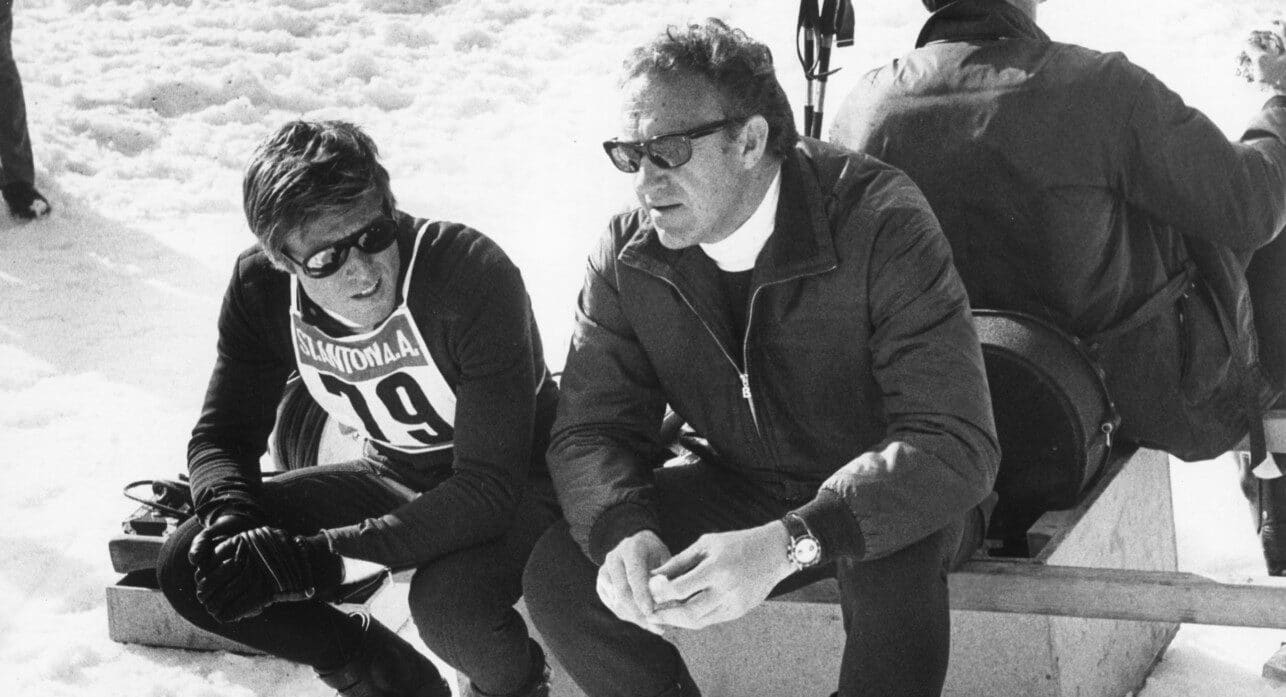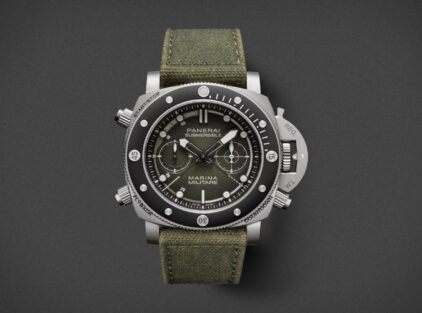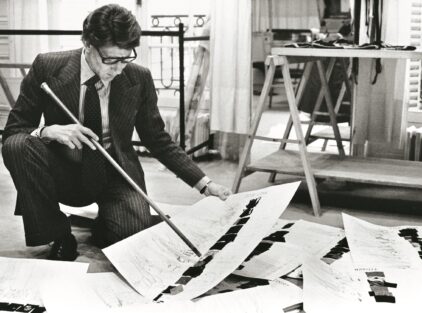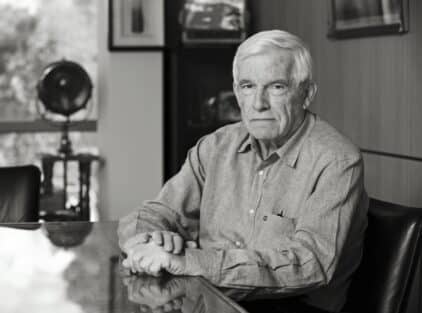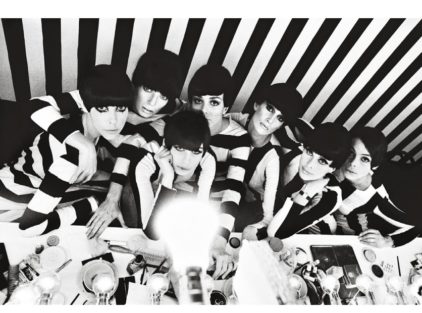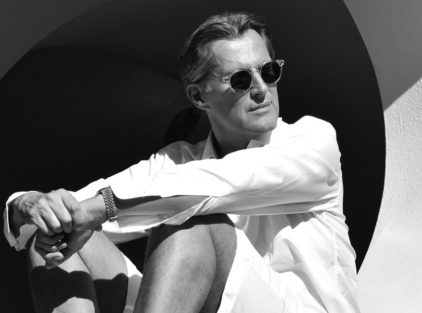by George Archimandrite
Film historian, director of the documentary film “The Melancholic King” about cycling legend René Vietto (“Le roi mélancolique”, 2020) and author (with Gérard Camy) of the luxury volume “Sport & Cinéma” (Editions du Bailli de Suffren, 2016), Julien Camy talks to us about the relationship between sport and cinema, their similarities and differences, their aesthetic, social and spiritual dimensions.
Why has cinema, from its birth, shown so much interest in sports?
Perhaps, first of all, because the two worlds developed in parallel. Sports, as we know them today, began to be codified at the end of the 19th century, when cinema was born (the first modern Olympic Games were held in 1896, a year after the first cinema screening). The Seventh Art, then, whose core is the capture of movement, immediately began to record, through chronophotography, sports that also have movement as their main element. Beyond these historical reasons, however, cinema’s interest in sports is also due to commercial reasons. Sport is one of the most popular forms of entertainment in the world and film producers thought that films with sporting themes would appeal to a wide audience. These films were very successful in the USA, because sport is a key element of American culture, but less so in Europe, whose culture is more inclined towards works of the spirit.
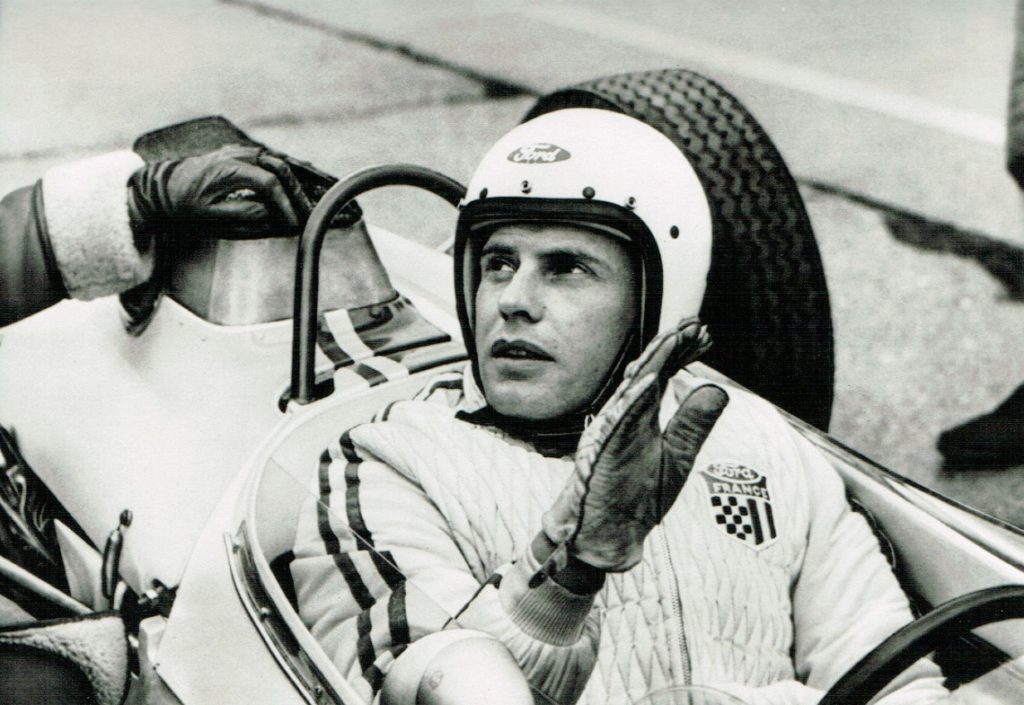
Jean-Louis Trintignant had a passion for motor racing. The nephew of Maurice Trintignant, the first French Formula 1 driver to win a Grand Prix, he competed in many races, including the “24 Hours of Le Mans” in the early 1980s. Another common feature of these two worlds is the fact that they evoke strong emotions in the viewer.
Of course. They offer him the opportunity to experience special, unique moments. But the respective ways of viewing are different. The spectator of a match remains an external observer in relation to it, like the spectator of a play. But the spectator of a film is immersed in it and identifies with its heroes. Cinema takes this factor into account when presenting a sport. Because if it shows it as one sees it in reality, the viewer will not be moved. On the contrary, if it shows it in a cinematic way, it can make the viewer feel the psychology of the athlete for several minutes, as cinema has the ability to expand time or stop it. What a football player experiences before hitting a penalty kick, for example, lasts only a few seconds in real life, whereas in cinema it can last a few minutes. In this way, cinema manages to evoke the emotions of the athlete in the viewer. And a film is considered successful when it makes you identify with the hero, become one with him.
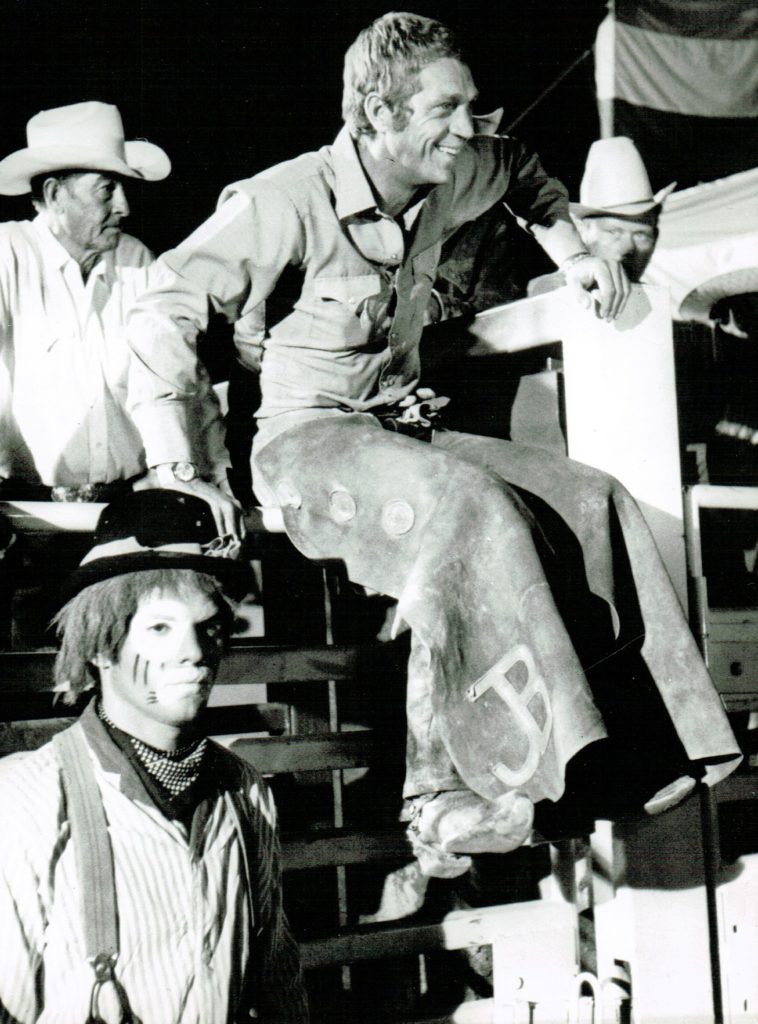
Steve McQueen in Sam Peckinpah’s “Junior Bonner” (1972).
What sports have you been most involved in in Seventh Art?
At the top is boxing, which is mostly found in American cinema. Second comes football, but it is more universal and is found as a cinematic subject in many countries. Boxing comes first, first of all for technical reasons, as it takes place in a defined, elevated and illuminated space and this makes it easier for the filmmakers. Then it involves only two people and that makes it easier to shoot than football, for example, where twenty-two footballers are running after a ball. Boxing is also a sport that has other dimensions, as it allows you to talk about the confrontation between two people or to create powerful images of bleeding bodies, images that refer to religious iconography, to the passions of Christ and the martyrs. And then there is the whole world that surrounds it with the mobsters, the betting, the fixed fights, all these elements that mainly fed the film noir and which also have social dimensions, because in boxing we often find athletes from low social strata who want to rise socially, to gain recognition and respect. All the great American directors have made films about boxing matches and each of them has tried to find a different way to bring them to the screen: John Huston, Michael Mann, Martin Scorsese, Charlie Chaplin in “City Lights”, but also French or Italian directors, such as Jean-Pierre Melville in “L’aîné des Ferchaux” with Jean-Paul Belmondo, who, for the record, was a real boxer, Luchino Visconti in “Rocco and His Brothers” with Alain Delon, and many others.
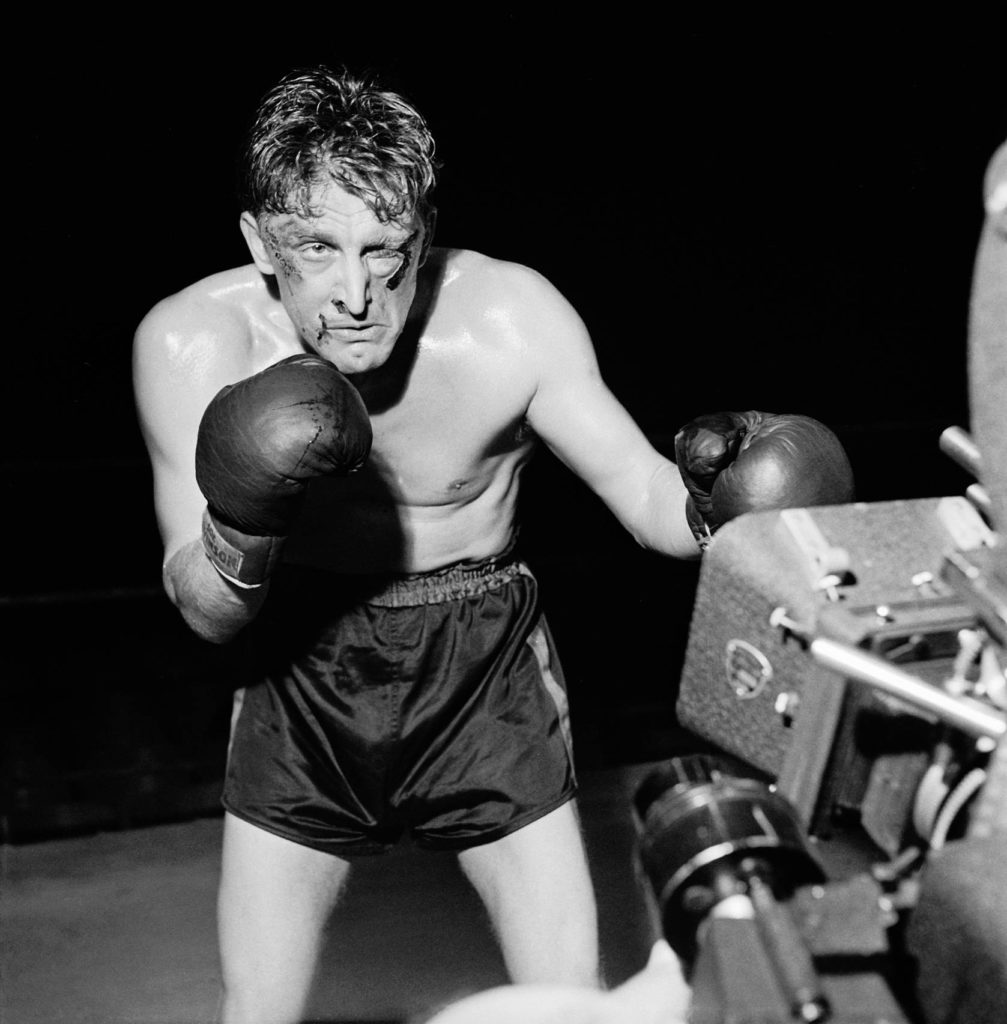
Kirk Douglas in M. Robson’s “Champion” (1949).
What are for you the most successful films of the genre?
There are so many! I really like “Requiem for a Heavyweight” with Anthony Quinn and Cassius Clay, who plays himself. It’s an excellent film that shows how far schizophrenia can go between the body and the mind. Ken Loach’s “Looking for Eric ” with Eric Cantona is also a film I love, a film that highlights the cultural dimension of football through the values of brotherhood and solidarity, the belief that we are stronger when we are united than we are individually. When, in one of our conversations, I asked Loach why he thought football was so important, he replied this: “I’m talking about the working class of Britain. And when you make a film like this there are two things you can’t ignore, football and humour. Those two elements are essential because they are the only ones that allow you to be faithful and correct in your representation of reality.” Another film I particularly love is Martin Scorsese’s “Raging Bull” with Robert De Niro, because it ignores any code of realism. If you watch the races in the film closely, you will find that what you see cannot possibly happen in a real race. But Scorsese’s art and De Niro’s talent make you believe in the hero and the story. So from there on out, whatever you see you’ll believe it, even if it’s not realistic. That’s the power of cinema.
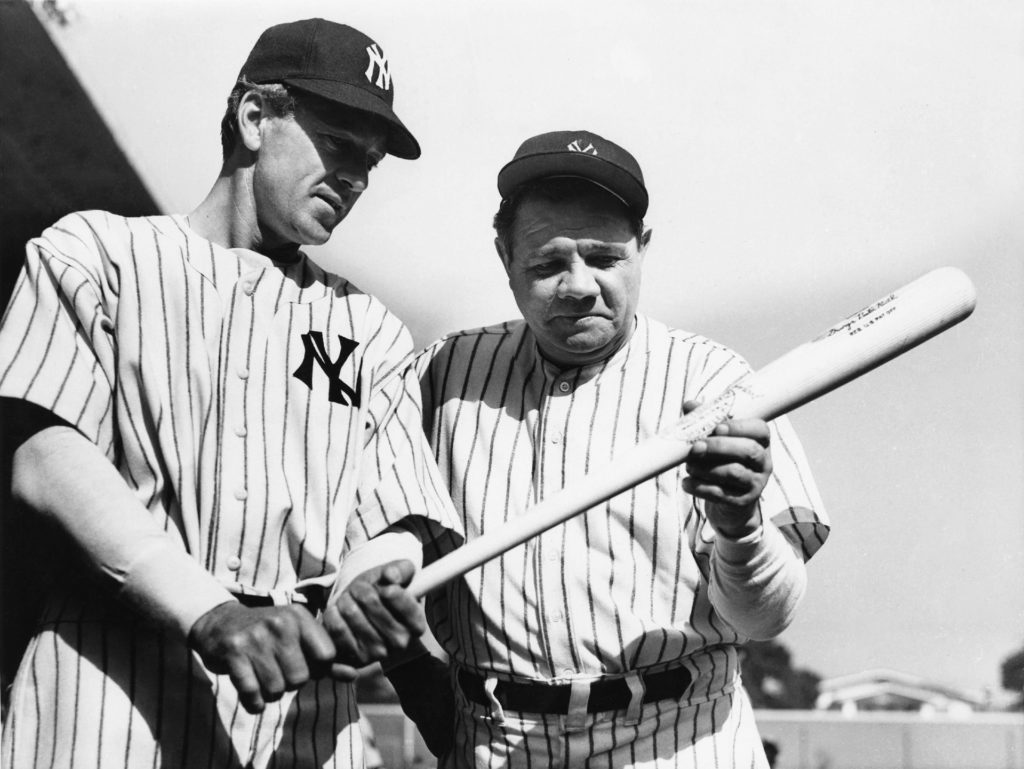
Gary Cooper and baseball legend Babe Ruth in Sam Wood’s “The Pride of The Yankees” (1942).
But you haven’t told us about movies about cycling, which is one of your favorite sports?
A very beautiful French film on cycling is “Ghislain Lambert’s Bicycle” by Philippe Harel with Benoît Poelvoorde. The film shows in a very moving way how a sport can become a person’s reason for being. Cycling has the ability to tell stories, as it is directly related to the concept of time. It has accelerations, decelerations, falls, climbs, descents. There is an evolving chronology that is a bit like life. It has moments of good times, moments of difficult or even dull times. And then it offers you the possibility of travel. It takes you from place to place. It takes you somewhere. And that sense of freedom is unique. Also when you make a film about cycling, you can stop at the psychology of the athlete. In the documentary I made about the legendary cyclist René Vietto, one of the things I wanted to emphasize was that cycling was a vital necessity for him, like painting or writing for a painter or a writer. This ability of an athlete to give himself body and soul to his sport until death raises him to the level of an artist. This is how myths are created, through the ability to overcome the difficulties of reality in order to “become immortal and then die”, to paraphrase the words of Parvulesco, embodied by the director Jean-Pierre Melville in Jean-Luc Godard’s Breathless. Cycling is a life lesson.
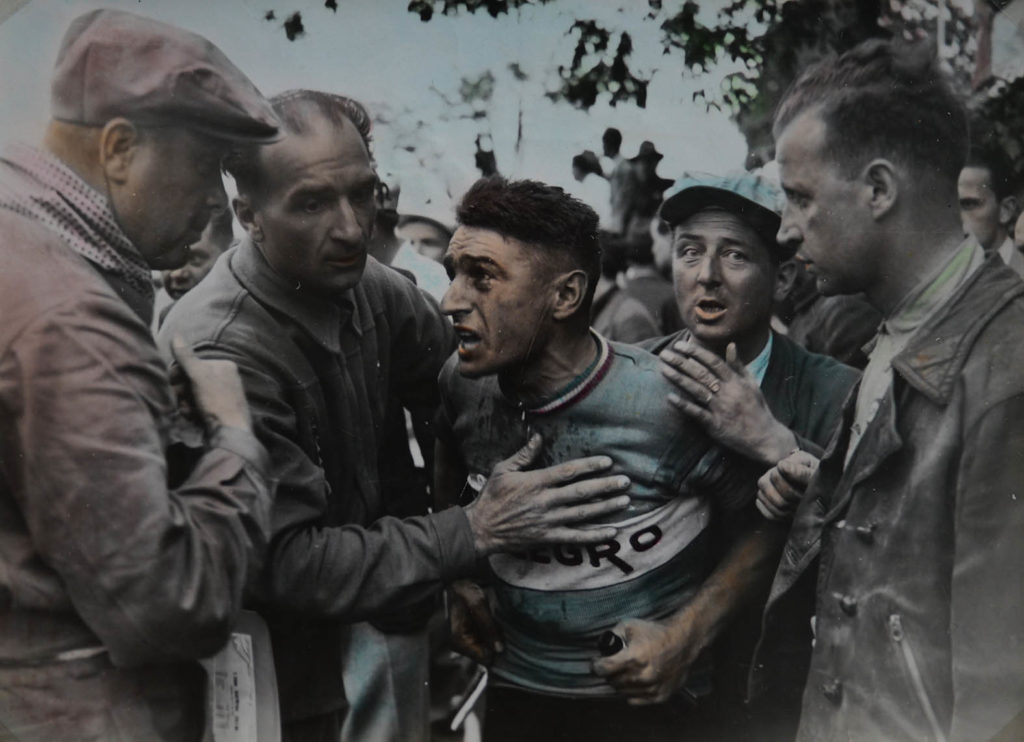
Cycling legend René Vietto in a photo from the documentary film “The Melancholic King” by Julien Camy.
This heroic side of athletes makes them symbols, objects of worship, just like film actors.
Of course. Because we, as spectators, project our desires and dreams onto them. We all like films where small, marginal or amateur sports teams suddenly win, thanks to a coach, the fight of their lives. These kinds of stories are called underdog stories in cinema, such as the very successful film “Rasta Rockett”. Consider also that there is a bronze statue of Rocky in front of the Museum of Fine Arts in Philadelphia. A fictional character is treated as a national hero, like the great men who made the USA what it is! All of these stories make us dream because they reassure us. They show us that there are sports and social values and make us feel good, even when the hero doesn’t achieve his goal. In France, we particularly like the stories of wonderful losers. Even in them there is always something positive at the end about human values. The hero loses, but remains true to his principles and becomes an inspiration and a guide for us viewers to find our own reference points. Athletes help us to become who we are, like the heroes of movies or literary works.
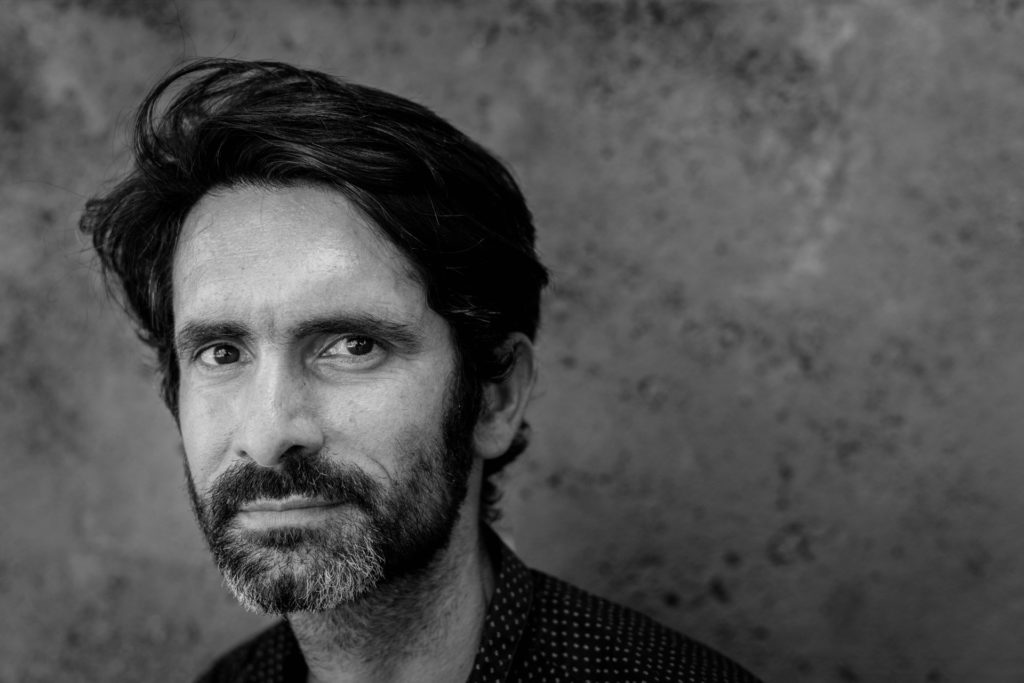
Julien Camy.
Pasolini said: “Sport is a very important cultural phenomenon that should not be ignored or overlooked by the ruling class and intellectuals.” What is your position on this?
I don’t separate film culture from sports culture or literature culture. One is confronted with a kind of condescension or contempt when talking about the relationship between sports and cinema, because there is often the view that these two worlds cannot coexist. For many years, it was not considered appropriate for an intellectual to read a sports newspaper such as Equipe, but today things are changing, as sport is becoming an increasingly important part of our lives. Intellectuals can no longer ignore the cultural richness of sport and many of them are making their sporting coming out. They love sports, they watch them, they practice them themselves, they talk and write about them in a different way, highlighting their importance on an intellectual level, i.e. what sports can offer us spiritually. Sport is a key cultural element of our society and touches us all in different ways. And cinema captured this very early on for the satisfaction and enjoyment of us all.
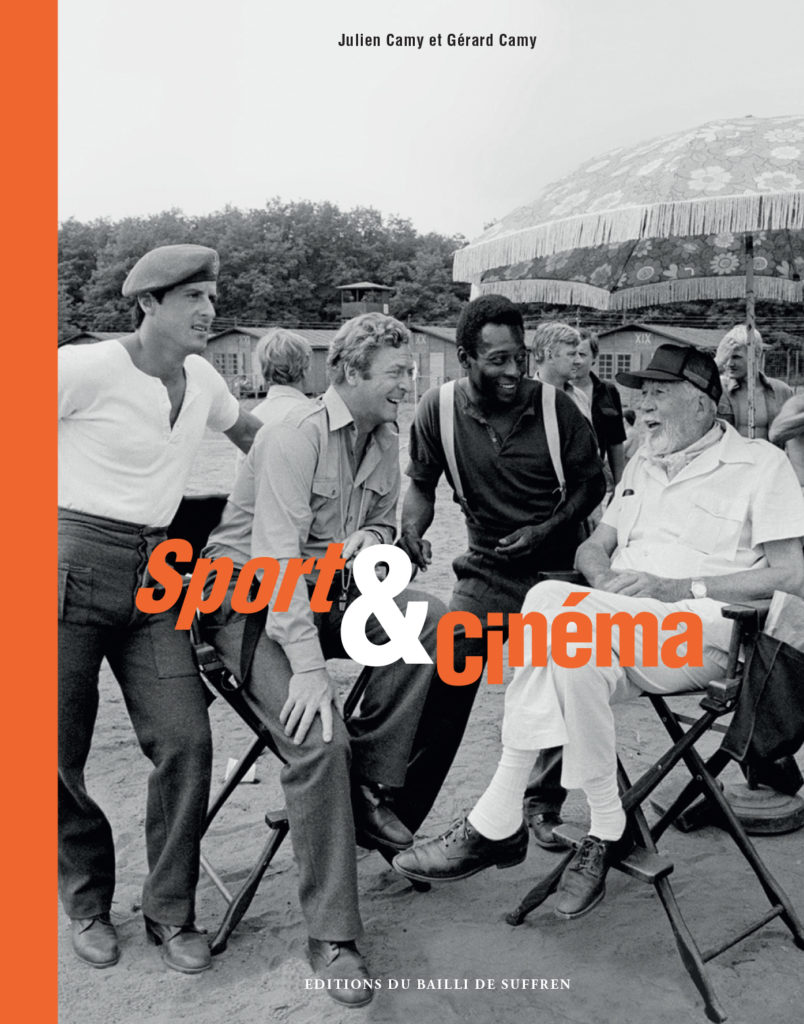
Julien Camy’s book is published by Bailli de Suffren.
Photo Credit: Editions du Bailli de Suffren
